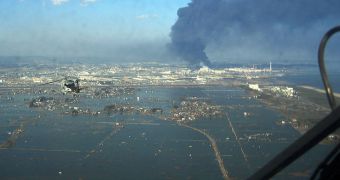According to experts, there is no correlation between massive earthquakes occurring on one side of the globe and other, potential tremors that may occur on the other side. In other words, events like the one that took place in Japan on March 11 are unlikely to cause similar devastations elsewhere.
What scientists failed to find was a direct link between major tremors. While each such event rearranges tectonic plates at and around its epicenter, it does not produce global effects. This means that it does not increase the risk of earthquakes at locations thousands of miles away.
Geophysicists at the US Geological Survey (USGS), in Menlo Park, California, decided to carry out the new investigation after analyzing the magnitude 9.0 tremor that devastated the Asian nation.
The team reveals that seismic events of this magnitude do produce other tremors, some of which even exceed magnitude 6.0. However, they only occur locally. If a tremor is indeed triggered in a tectonic plate far away, than that event has a very low magnitude.
This study included 30 years of seismic data, which the USGS group analyzed in tremendous detail. Conclusions were published in the March 27 online issue of the esteemed journal Nature Geoscience.
“If California is ready to go, it’s because California is ready to go, not because an earthquake in California would be triggered by Japan,” explains geophysicist Jian Lin, from the Massachusetts-based Woods Hole Oceanographic Institute (WHOI).
Study coauthor Tom Parsons focused the new research on tremors of magnitude 7 or larger. Some 200 such events were recorded over the past three decades, Wired reports. The main conclusion was that a “domino-like effect” could indeed be identified in surrounding tectonic plates.
However, the effect spanned a range of only 1,000 kilometers (621 miles). Beyond that distance, all tremors caused from the original source had a magnitude lower than 5. “It might be a surprising result to the public. But it’s not a surprising result to an earthquake scientist like myself,” Lin explains.
But the investigators admit that there are still many things seismologists don't know about the physics behind earthquakes. This makes it very difficult to predict when and where the next big one will strike.
Installing sensor networks at the intersection of tectonic plates is one way of improving our knowledge of these phenomena. However, doing so is rather expensive, and the political and financial will to support such endeavor will continue to remain absent until a disaster actually hits.
“Ultimately, we’d like to understand the physics behind [tremors]. That makes us a lot more comfortable when we’re forecasting things,” Parsons concludes.

 14 DAY TRIAL //
14 DAY TRIAL //